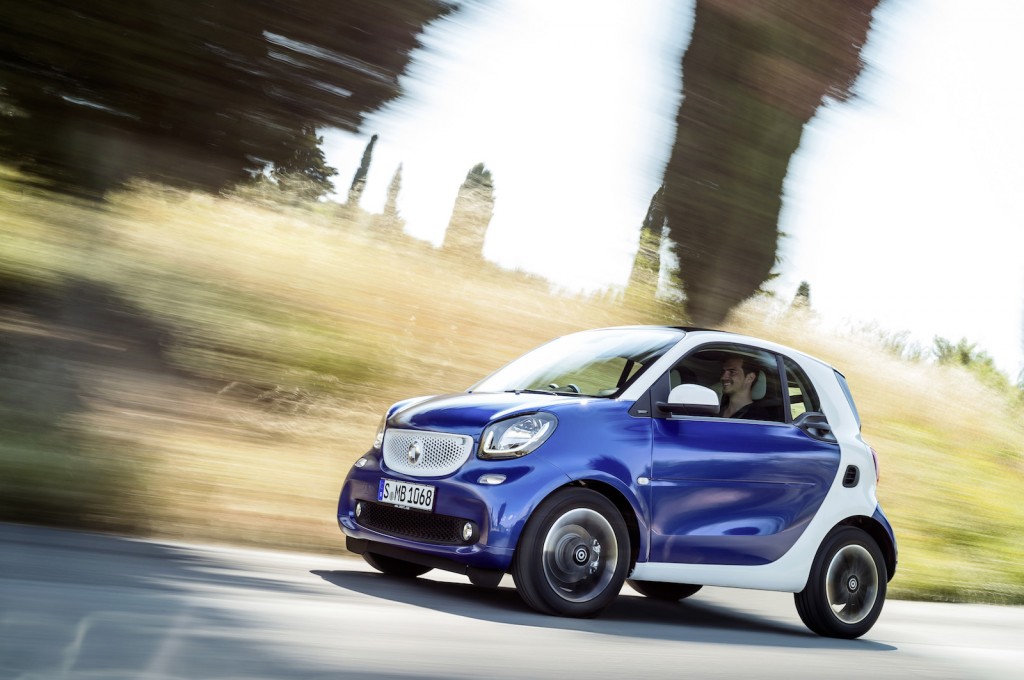Reassuring people that its tiny Fortwo city car is safe must be a constant struggle for Daimler's Smart brand.
In Europe, where the diminutive cars roam around streets barely wider than the car, it's not such a problem. But in the U.S, where half the population drives 5,000-lb pickup trucks, people take a lot more convincing.
Engineering progression means the latest 2016 Fortwo is the safest yet. What better way to show it than crashing the new car into something substantially bigger?
READ: Japan's Fuel-Cell Vehicle Pursuit: Is It Obama's 'All Of The Above' Approach?
Step forward the Mercedes-Benz S-Class--short of the brand's full-size SUVs, the biggest passenger vehicle it produces. At 5,088 lbs, the S-Class is about 2.1 times the mass of the 2,478-lb Smart. And about the weight of a regular-cab Ford F-150, albeit not quite as bluff around the front.
That also means the Mercedes has over twice the kinetic energy at 30 mph--for a 60 mph closing speed--as the Fortwo. Common perception suggests the Smart should not fare well while an object twice its mass piles into it.
The cars' difference in mass is apparent as they collide--the Smart comes to a halt much quicker while the Mercedes continues longer on its path. This would be felt by the Smart's occupants as greater deceleration forces, which traditionally increase the risk of injury.
However, Daimler's tests suggest forces experienced by the Fortwo's occupants are "within biomechanical limits"--in other words, readings from the crash test dummies suggest the car's occupants would be largely unharmed by such a crash.

2016 Smart ForTwo
There are caveats to such a test, of course. The vehicles' closing speed is representative of city-based accidents, but not those at higher speeds on open highways.
ALSO SEE: 2015 Volkswagen e-Golf: Quick Preview Drive Of All-Electric Hatchback
The Smart will still be hugely safer than small cars of days gone by in such an incident, and its higher weight in this modern iteration means it won't quite turn into the pinball a lighter car might in a high-speed crash--but the laws of physics do impose limits.
Equally, it's worth noting that a small, light car like the Smart may be better adapted to avoiding accidents in the first place than a huge, lumbering vehicle whose mass counts against it in an emergency maneuver.
Avoiding accidents entirely is hugely preferable to having one, regardless of your vehicle...
_________________________________________













